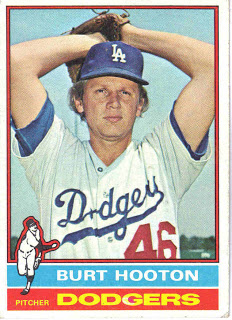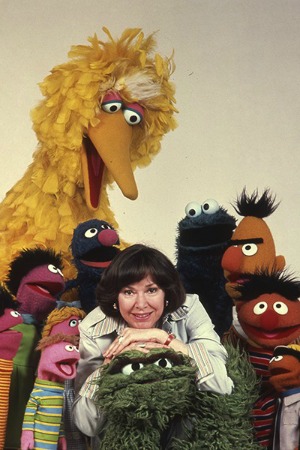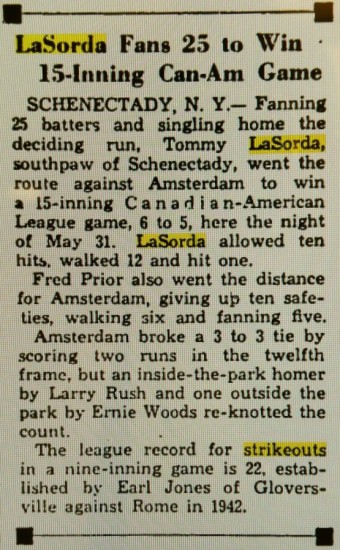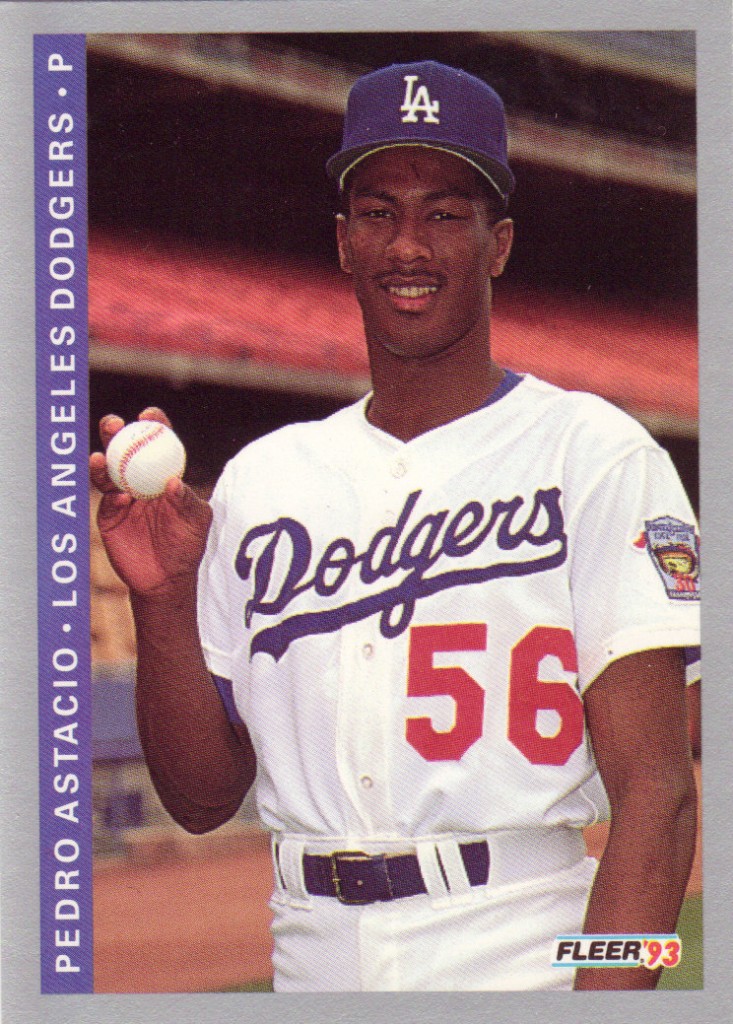I wrote about the new Jackie Robinson film “42” for Sports on Earth. Ultimately, I enjoyed the experience even as I was disappointed by it.
For an even saltier take on the movie, here’s Scott Foundas’ review for Variety.

I wrote about the new Jackie Robinson film “42” for Sports on Earth. Ultimately, I enjoyed the experience even as I was disappointed by it.
For an even saltier take on the movie, here’s Scott Foundas’ review for Variety.
This piece on Jackie Robinson’s final days in 1972 at L.A. Observed’s Native Intelligence was written by former Los Angeles Times and Daily News sportswriter Ron Rapoport. Portions ran previously in the Los Angeles Times Magazine, but anyone interested in Robinson should read it in its entirety.
Carl Crawford, LF
Mark Ellis, 2B
Matt Kemp, CF
Adrian Gonzalez, 1B
Juan Uribe, 3B
Andre Ethier, RF
A.J. Ellis, C
Justin Sellers, SS
Josh Beckett, P
 … (Chan Ho) Park made one more appearance before the Dodgers shipped him to Double-A San Antonio. There he met Burt Hooton, a pitching instructor and former Dodgers starter.
… (Chan Ho) Park made one more appearance before the Dodgers shipped him to Double-A San Antonio. There he met Burt Hooton, a pitching instructor and former Dodgers starter.
“Burt Hooton was my best friend my first two years,” said Park, who spent most of the 1995 season at Triple-A Albuquerque before breaking through with the Dodgers in ’96. “He was like an uncle to me. He cared about me, my emotions, while he was helping me learn techniques.
“One thing I told Ryu was that meeting good people is very important. I told him to try to make his pitching coach his best friend. When I got my first Major League win, I called Burt Hooton before I even called my parents. That’s how important he was to me.” …
— Ken Gurnick, MLB.com
When I ranked the top 50 Dodgers of all time a year ago for ESPNLosAngeles, Burt Hooton was 29th. But generally, you don’t hear much about him when the pantheon of great Dodgers is discussed. Nice to see his name brought back to life, particularly in this extra, nurturing dimension.
Hooton gave the Dodgers 10 years of a 3.14 ERA and though he’s often thought of as a postseason goat thanks to one outing in Philadelphia, recovered to have a 2.79 ERA in his 10 other Dodger playoff games, including a remarkable 0.82 ERA over five 1981 postseason starts. (He was the Most Valuable Player of the 1981 National League Championship Series, pitching 14 2/3 shutout innings.) That’s some big stuff that no one ever talks about.
He managed to do this despite averaging five strikeouts per nine innings, a rate that would almost assuredly signify failure in this era. Opponents had a .659 OPS against Hooton over his 15-year career. Since 1972, Hooton has the eighth-best opponent OPS+ among all Dodger pitchers (minimum 600 innings).
Footnote: Hooton is a member of the College Baseball Hall of Fame and was named the No. 4 college baseball player of the 20th century by Baseball America. Here is his induction speech …
 Thanks to this Lyle Spencer interview with Vin Scully on MLB.com, we learn that the night Scully broadcast the Dodgers’ 1955 Game 7 World Series win, he went on a date with future “Sesame Street” creator Joan Ganz Cooney.
Thanks to this Lyle Spencer interview with Vin Scully on MLB.com, we learn that the night Scully broadcast the Dodgers’ 1955 Game 7 World Series win, he went on a date with future “Sesame Street” creator Joan Ganz Cooney.
… “After the third out, Johnny Podres having shut them out, I was taken in a car to the Lexington Hotel with some other Dodgers people,” Scully said. “I had a date, and I left the group to get my car and go pick her up. We drove over to Brooklyn for the party at the Bossert Hotel.
“It was like V-J Day and V-E Day rolled into one when we came out of the tunnel. There were thousands of people on the sidewalks leading to the hotel. There were policemen, and parking attendants who took your car about a block from the hotel. Walking down that street to the hotel, that was an unforgettable scene.”
Young Vin really knew how to impress a date.
“Her name was Joan Ganz,” Scully said. “She was from Arizona. I’m pretty sure she later became the creator of ‘Sesame Street.’ You can check on that. We liked each other and stayed in touch, but it never got serious. I haven’t told this story, but what the heck. That was a long time ago.”
An internet check confirmed Scully’s recollection of the future of Ms. Ganz, a publicist in New York City when they met. In 1966, Joan Ganz Cooney oversaw and directed the creation of “Sesame Street,” which premiered in 1969. As the first executive director for Children’s Television Workshop, she was among the groundbreaking female executives in American television.
A Presidential Medal of Freedom award winner in 1995, Ganz Cooney was elected in 1989 to the Academy of Television Arts and Sciences Hall of Fame, and three years later was inducted into the National Women’s Hall of Fame. Her date that memorable October night in 1955 also is a Hall of Famer, of the Cooperstown variety. …
Just to put the Yankees’ hand-wringing over Alex Rodriguez in perspective, imagine if the Dodgers’ contract with Manny Ramirez still had two years to run.
Jon Heyman, SI.com, October 15, 2008:
There are some early signs that the Dodgers’ negotiations involving Manny Ramirez, who almost single-handedly lifted the storied franchise to the postseason, will not necessarily go smoothly. Ramirez is believed to be seeking a six-year deal for as much as $25 million per year, and Dodgers owner Frank McCourt is said to be skeptical that the competition will be keen for the controversial but ultra-productive superstar he acquired for virtually nothing a minute before the trade deadline.
Ramirez’s agent, Scott Boras, declined to name a target price in an interview with SI.com on Wednesday. That $150 million total price tag is an estimate based on Boras’ use of the word “iconic” to describe the 36-year-old Ramirez, combined with Ramirez’s own constant mention of a “six-year deal” during frequent media interviews this postseason. Another factor is the reminders from those close to Manny that the 10-year deal Alex Rodriguez signed last year calls for him to be paid his regular $30 million salary from ages 38-42.
Ramirez apparently isn’t kidding with his occasional hints about a six-year deal. If that sounds like a stretch, the Dodgers will have to consider the alternative, which is to present a Manny-less team the year after the hitting savant saved them in the regular season, then carried them in October.
“He pays for himself. You’ve got a free player with Manny,” Boras said. “He’s an iconic player who’s changed the face and fortunes of the franchise.” …
Joel Sherman, New York Post, October 15, 2008
… In other words, Boras is not offering apologies or discounts related to the unprofessional way in which Ramirez forced his way out of Boston. In true no-retreat, no-surrender Boras style, he is strongly hinting that he wants a six-year contract for Ramirez at top-of-the-market dollars.
“All I will tell you is, name me the player in recent times that has had the kind of season [Ramirez] has had this season and postseason,” Boras said yesterday during a conversation that lasted more than an hour.
“Put that together with two [championship] rings on his fingers, and the history he has, and that he is two years younger than Bonds when [Bonds] was a free agent. Bonds signed a five-year contract [for $90 million after the 2001 season] at 38 [he turned 38 midway through the first year of the deal] and got paid until he was 42.
“If Bonds gets five years at 38, what does Manny get at 36? If A-Rod gets paid to 42 [on his 10-year deal with the Yankees], why not Manny? He doesn’t take a backseat to him.” …
In the end, it might just be a confidence booster for 2013, but for the first time, I get the feeling the Dodgers are thinking about trying to get some starts out of Rubby De La Rosa in September.
While it’s still a ways from taking a major-league mound in September, De La Rosa pitched a season-high four innings Saturday for Rancho Cucamonga, allowing no runs on two hits and a walk with two strikeouts.
In four minor-league outings since his comeback from Tommy John surgery began, De La Rosa has thrown 12 scoreless innings with 12 strikeouts, allowing five hits and three walks. At a minimum, De La Rosa might soon to be primed to help the bullpen in September.
Last year in the majors, De La Rosa had a 3.88 ERA with 55 strikeouts in 55 2/3 innings as a starter, while allowing a run in five innings with five strikeouts as a reliever.
* * *
In shorter-term relief news, Scott Elbert – who struck out all six batters he faced in his two minor-league rehab outings – was activated from the disabled list in the next day or so. The Dodgers sent Elian Herrera, who was 1 for 3 while mostly idling on the bench behind Hanley Ramirez and Luis Cruz since his recall, to the minors. Herrera would have played even less had Matt Kemp not been ejected Thursday.
That move lengthens the Dodger bullpen and shrinks the bench (at least for now), and kept the team from having to choose between sending Javy Guerra or Shawn Tolleson to the minors. Each was wild last night, each has allowed two inherited runners to score this month, but neither has been scored upon since late July.
For my part, I think Ronald Belisario would benefit from a two-week “elbow soreness” vacation. Matt Guerrier also pitched a shutout inning in the Rancho Cucamonga game, by the way.
* * *
We were trying to figure out how unusual Saturday’s no-singles game was, and Diane Firstman of Value Over Replacement Grit came up with the answer – and it’s a doozy.
The Dodgers and Braves combined for nine hits without any singles. The previous major-league record was four.
It was the sixth game in MLB history with no singles, including the Sandy Koufax perfect game against Bob Hendley’s one-hitter in 1965.
The biggest play of Saturday’s game was A.J. Ellis catching a foul tip, writes Ron Cervenka of Think Blue L.A.
If you’re crazy for the Dodgers, well tonight, they were crazy for you.
Los Angeles hit four home runs – including three in a row for the first time since 2007 – yet had no other hits while coming away with a 6-2 victory over Atlanta.
Within a quartet of pitches from Ben Sheets in the second inning, Hanley Ramirez, James Loney and Luis Cruz hit the Dodgers’ first back-to-back-to-back home runs since Hong-Chih Kuo bat-flip night, when he followed Wilson Betemit and Matt Kemp with dingers.
Then in the sixth inning, after walks to Kemp and Andre Ethier, Ramirez hit his second homer of the game on a 3-0 pitch, giving the Dodgers’ a 6-1 lead. On the roadtrip, Ramirez is 17 for 38 with a .463 on-base percentage, three home runs, 14 RBI in nine games and 28 total bases.
But before, during and after the four home runs, there were no other Dodger hits.
To my shock, two teams this year (Colorado and Baltimore) have had games with five home runs and no other hits, joining the 2004 New York Yankees as the only squads since at least 1918 to do so. The record-holders in this category are the Cleveland Indians, who hit six home runs (three by Joe Carter) with no other hits on June 24, 1989.
Nevertheless, the Dodgers tonight became only the third team in MLB history to hit four home runs and have no other hits. One of those teams was the 2002 Dodgers, who got two home runs by Shawn Green and solo shots from Eric Karros and Alex Cora off Ramon Ortiz – who still threw a complete-game victory on June 14 that year.
The Dodgers also came within one batter of winning a game without leaving any runners on base for the first time since June 1, 2002, as Bob Timmermann noted, but Loney drew a two-out, ninth-inning walk and was stranded there by Cruz.
And finally, the two teams completed the rare feat of combining for nine hits without any singles.
The effort made a winner of Aaron Harang, even though the righty began the game with a simply awful first inning. He started by walking leadoff hitter Michael Bourn on four pitches and then allowing an RBI double to Martin Prado two tosses later. Jason Heyward flew out on a 2-0 count for the first out, before bench coach and acting manager Trey Hillman decided to walk Chipper Jones intentionally. Freddie Freeman did a favor by fouling out on the first pitch he saw, but Dan Uggla walked on four straight balls to load the bases.
On a 3-2 count, David Ross struck out on a high and inside pitch to allow Harang to escape the first inning with only one run against him, despite facing seven batters and being credited with only eight strikes.
But Harang found his center of gravity after that. Though he only retired the side in order once all night, from the first inning on he held the Braves scoreless into the bottom of the seventh on two walks, two doubles, and a triple, striking out four of the last five batters he faced (capping a 115-pitch outing that featured 57 balls and 58 strikes). Randy Choate entered the game with two out, Bourn on third and Heyward at the plate. And just as people were hoping would happen Friday before the Dodgers’ that night lead was lost, Choate struck Heyward out.
The eighth inning was nearly a repeat of the first. Javy Guerra and Shawn Tolleson combined to walk the bases loaded despite the five-run lead, before the well-rested Kenley Jansen came in to strike out Friday’s hero, Juan Francisco, on three pitches.
Jansen did give up a ninth-inning home run to Prado, but retired Chipper Jones to wrap things up.
To say the least, this has been a lean year of home runs from Dodger leftfielders. The full list: Juan Rivera on May 6, Bobby Abreu on June 2, Elian Herrera on July 5, Jerry Hairston Jr. on July 7. That’s it. Four.
To my surprise, however, this kind of year isn’t unprecedented. In fact, the Dodgers aren’t on pace to have their worst year in leftfielder home runs since moving to Los Angeles — and the low-offense 1960s have nothing to do with it.
Lowest single-season HR totals for Dodger LF
Year G HR Players 2012 115 4 Abreu, Hairston, Herrera, Rivera 1958 154 6 Cimoli, Demeter, Fairly, Gilliam, Howard, Roseboro 1974 162 7 Buckner 7 1976 162 7 Buckner 7 1970 161 8 Crawford 4, Mota 3, Kosco 1981 110 8 Baker 8 1973 162 9 Buckner 3, Crawford 2, Joshua 2, Ferguson, Paciorek 1975 162 9 Buckner 6, Lacy 2, Crawford 2011 161 9 Rivera 4, Gwynn 2, Gibbons, Oeltjen, Sands 1992 162 10 Davis 5, Webster 3, Daniels 2 2005 162 10 Ledee 3, Grabowski 3, Repko 2, Werth 2
The lowest total of home runs by leftfielders for the Dodgers in the 1960s was 14, in 1965 and 1966.
Here are the top five seasons since 1958:
Year G HR Players 2000 162 48 Sheffield 43, Aven 2, Donnels 2, Leyritz 2001 162 42 Sheffield 36, Grissom 5, Aven 1999 162 34 Sheffield 34 1990 162 32 Daniels 27, Gwynn 3, Gibson 2 1977 162 30 Baker 30
Dodger leftfielders hit more home runs in 2000 than Dodger leftfielders have hit since 2009 (45).
Sheffield hit his 43 homers in 2000 in only 139 games … but how ’bout that Bruce Aven, huh?
Coming soon — home run droughts at first base for the Dodgers.
* * *
Cuban prospect Yasiel Puig has been promoted to Single-A Rancho Cucamonga. Mike Petriello of Mike Scioscia’s Tragic Illness has more.
Update: Elian Herrera has been called up in place of Jerry Hairston Jr., who was placed on the disabled list with left hip inflammation.
If you haven’t read the 1964 Robert Creamer feature on Vin Scully, don’t put it off any longer.
Meanwhile, Scully told Tom Hoffarth of the Daily News that he was approached to be the original play-by-play man for ABC’s Monday Night Football.
… Scully stands by the Red Barber philosophy of having one voice in the booth narrate for radio or TV. He says he saw the trend of analysts taking over came back in the 1970s, when he was asked by ABC producer Chuck Howard if he’d be interested in becoming the first play-by-play man on “Monday Night Football.”
“He said it was going to be the hottest thing on TV — and he was right,” said Scully.
Scully declined, in part, because “the more I thought about it, I realized it would conflict with the Dodgers’ schedule.” But another reason he passed, he said, had to do with how he saw the play-by-play man’s role being diluted.
Keith Jackson ended up with the job for the first year of “MNF” in the debut year of 1970, with Howard Cosell and Don Meredith as the analysts. Frank Gifford replaced Jackson in 1971 and stayed on play-by-play until 1985, when Al Michaels came in, and Gifford moved to an analyst until 1997.
“Because of how football was going to be televised, you’d have one or two analysts now in the booth,” Scully said. “I had been doing games with Jim Brown on one side and George Allen on the other, and there were times I wasn’t sure, ‘Do I turn to him first for an opinion?'”
Scully said the emergence of John Madden, who he had as a partner at CBS, “really put the analyst front and center. And baseball picked up on that. The whole business changed in my opinion because of the way ‘Monday Night Football’ did it.”
Change, maybe not for the better, as far as how local baseball broadcasts were influenced by the national presentation. …
* * *
Robert Creamer’s “Babe,” I believe, was the first grown-up baseball biography I ever read. Creamer passed away at the age of 90 this week. Alex Belth offers an appreciation of Creamer at Bronx Banter, including a link to a 1964 Sports Illustrated time capsule of a piece on Vin Scully.
Dodgers who have started a game batting first and cleanup in the same year, since 2000:
2012 – Bobby Abreu
2009 – Matt Kemp
2008 – Nomar Garciaparra
2008 – Russell Martin
2005 – Jayson Werth
2003 – Adrian Beltre
2001 – Marquis Grissom
2001 – Paul Lo Duca
This 2009 photo is from a collection by Jon SooHoo of the Dodgers.
 Tommy Lasorda recalls the time he struck out 25 while allowing 23 baserunners in a 15-inning game — with documentation! Lasorda also drove in the game-winning run (link from May via Baseball Think Factory).
Tommy Lasorda recalls the time he struck out 25 while allowing 23 baserunners in a 15-inning game — with documentation! Lasorda also drove in the game-winning run (link from May via Baseball Think Factory).
The headline for the post is, “If you believe in pitch counts, read this.” I wonder, though, if Lasorda might have had a better major-league career if he hadn’t pitched a game like this.
Or not. In the minors, Lasorda walked 1,158 and struck out 864.
 One of my all-time favorite Dodger moments, perhaps the favorite between A Happier 9/11 and the 4 + 1 game, took place 20 years ago tonight — starring Pedro Astacio. Read more about it at Los Angeles Magazine’s CityThink blog.
One of my all-time favorite Dodger moments, perhaps the favorite between A Happier 9/11 and the 4 + 1 game, took place 20 years ago tonight — starring Pedro Astacio. Read more about it at Los Angeles Magazine’s CityThink blog.
Get your kicks …
Page 26 of 35
What happens when three old friends in crisis fall into an unexpected love triangle? In The Catch, Maya, Henry and Daniel embark upon an emotional journey that forces them to confront unresolved pain, present-day traumas and powerful desires, leading them to question the very meaning of love and fulfillment. The Catch tells a tale of ordinary people seeking the extraordinary – or, if that’s asking too much, some damn peace of mind.
Brothers in Arms excerpt: Fernando Valenzuela
October 22, 2024
Catch ‘The Catch,’ the new novel by Jon Weisman!
November 1, 2023
A new beginning with the Dodgers
August 31, 2023
Fernando Valenzuela: Ranking the games that defined the legend
August 7, 2023
Interview: Ken Gurnick
on Ron Cey and writing
about the Dodgers
June 25, 2023

Thank You For Not ...
1) using profanity or any euphemisms for profanity
2) personally attacking other commenters
3) baiting other commenters
4) arguing for the sake of arguing
5) discussing politics
6) using hyperbole when something less will suffice
7) using sarcasm in a way that can be misinterpreted negatively
8) making the same point over and over again
9) typing "no-hitter" or "perfect game" to describe either in progress
10) being annoyed by the existence of this list
11) commenting under the obvious influence
12) claiming your opinion isn't allowed when it's just being disagreed with
1991-2013
Dodgers at home: 1,028-812 (.558695)
When Jon attended: 338-267 (.558677)*
When Jon didn’t: 695-554 (.556)
* includes road games attended
2013
Dodgers at home: 51-35 (.593)
When Jon attended: 5-2 (.714)
When Jon didn’t: 46-33 (.582)
Note: I got so busy working for the Dodgers that in 2014, I stopped keeping track, much to my regret.
Powered by WordPress & Theme by Anders Norén